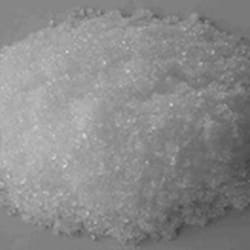IUPAC Name
Sodium Carbonate
Cas Number
497-19-8
HS Code
2836.20.00
Formula
Na2CO3
Industry
Textile Chemicals
Appearance
White Granules
Common Names
Soda ash, dense, Sodium carbonate, Sodium carbonat
Packaging
50 kg PP/PE Bag
Soda ash dense, an anhydrous version of sodium carbonate, is the technical term for this compound. Sodium carbonate decahydrate, a transparent, colorless crystalline substance commonly known as soda or washing soda, serves as its commercial form. Produced through the ammonia soda method (Solvay process) utilizing ammonia and carbon dioxide to treat sodium chloride, soda ash also originates from the naturally occurring mineral 'Trona.' Its significance spans multiple industries and manufacturing processes, serving diverse industrial purposes. Particularly essential in the manufacture of flat glass, container glass, and as a crucial element in detergent production, it remains a fundamental component in various sectors.
Mining: Sodium carbonate, present naturally as Trona (Na3HCO3CO3·2H2O), is acquired by dredging from specific alkaline lakes. Continuous replenishment of salt from hot saline springs ensures the sustainability of this source, maintaining balance as long as dredging rates align with replenishment.
Solvay Process: In 1861, Belgian chemist Ernest Solvay innovated a technique to convert sodium chloride into sodium carbonate using ammonia. This method utilized a tall tower: calcium carbonate (limestone) was heated at the base, releasing carbon dioxide, while a concentrated solution of sodium chloride and ammonia entered from the top. Carbon dioxide bubbling through the solution caused sodium bicarbonate to precipitate, which was then converted to sodium carbonate through heating. Ammonia was regenerated from ammonium chloride by reacting it with residual lime (calcium hydroxide) from carbon dioxide production. This efficient process recycled ammonia, utilizing only brine and limestone, and producing calcium chloride as the sole waste byproduct. By 1900, the Solvay process accounted for 90% of sodium carbonate production.
Hou's Process: Developed in the 1930s by Chinese chemist Hou Debang, this process involved pumping carbon dioxide from steam reforming through a saturated solution of sodium chloride and ammonia. This generated sodium bicarbonate, collected as a low-solubility precipitate, then heated to obtain pure sodium carbonate, similar to the final step in the Solvay process. Further introduction of sodium chloride and ammonia to the solution of ammonium and sodium chlorides allowed selective precipitation of ammonium chloride in a sodium chloride solution, owing to temperature-dependent solubility differences and the common-ion effect.
Named "Coupled Manufacturing Alkali Method" in Chinese, Hou's process, linked with the Haber process, enhances atom efficiency by eliminating calcium chloride production, as ammonia regeneration becomes unnecessary. The resulting byproduct, ammonium chloride, can be marketed as a fertilizer.
Soda ash dense, an anhydrous version of sodium carbonate, is the technical term for this compound. Sodium carbonate decahydrate, a transparent, colorless crystalline substance commonly known as soda or washing soda, serves as its commercial form. Produced through the ammonia soda method (Solvay process) utilizing ammonia and carbon dioxide to treat sodium chloride, soda ash also originates from the naturally occurring mineral 'Trona.' Its significance spans multiple industries and manufacturing processes, serving diverse industrial purposes. Particularly essential in the manufacture of flat glass, container glass, and as a crucial element in detergent production, it remains a fundamental component in various sectors.
Mining: Sodium carbonate, present naturally as Trona (Na3HCO3CO3·2H2O), is acquired by dredging from specific alkaline lakes. Continuous replenishment of salt from hot saline springs ensures the sustainability of this source, maintaining balance as long as dredging rates align with replenishment.
Solvay Process: In 1861, Belgian chemist Ernest Solvay innovated a technique to convert sodium chloride into sodium carbonate using ammonia. This method utilized a tall tower: calcium carbonate (limestone) was heated at the base, releasing carbon dioxide, while a concentrated solution of sodium chloride and ammonia entered from the top. Carbon dioxide bubbling through the solution caused sodium bicarbonate to precipitate, which was then converted to sodium carbonate through heating. Ammonia was regenerated from ammonium chloride by reacting it with residual lime (calcium hydroxide) from carbon dioxide production. This efficient process recycled ammonia, utilizing only brine and limestone, and producing calcium chloride as the sole waste byproduct. By 1900, the Solvay process accounted for 90% of sodium carbonate production.
Hou's Process: Developed in the 1930s by Chinese chemist Hou Debang, this process involved pumping carbon dioxide from steam reforming through a saturated solution of sodium chloride and ammonia. This generated sodium bicarbonate, collected as a low-solubility precipitate, then heated to obtain pure sodium carbonate, similar to the final step in the Solvay process. Further introduction of sodium chloride and ammonia to the solution of ammonium and sodium chlorides allowed selective precipitation of ammonium chloride in a sodium chloride solution, owing to temperature-dependent solubility differences and the common-ion effect.
Named "Coupled Manufacturing Alkali Method" in Chinese, Hou's process, linked with the Haber process, enhances atom efficiency by eliminating calcium chloride production, as ammonia regeneration becomes unnecessary. The resulting byproduct, ammonium chloride, can be marketed as a fertilizer.
